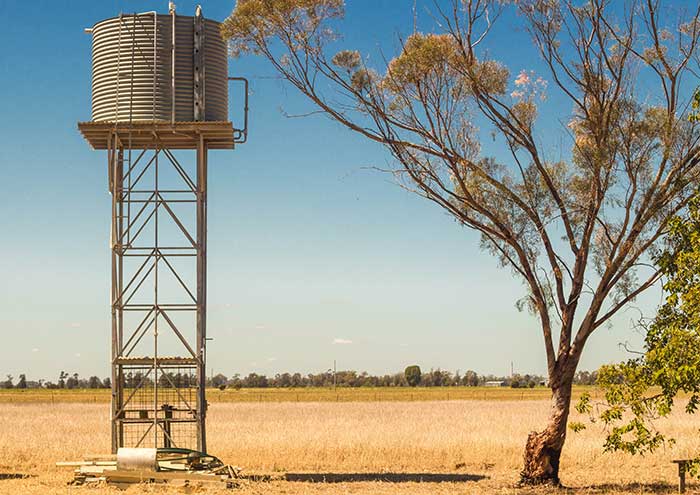Storage Tank Capacity
Generally, your storage capacity should be equal to 3 to 10 days of average water consumption, or more. This depends on your climate and your usage patterns. For domestic use in a cloudy climate, 10 days is minimal. In a sunny climate, this allows for a generous safety margin. For irrigation of deeply rooted crops or trees, 3 days’ storage may be adequate because the earth itself provides storage. For irrigating a garden, 5 days may be adequate. More is always better, unless evaporation loss is excessive.
Storage Tank Plumbing
Place your normal point of discharge higher than the bottom of your water tank, in order to hold a reserve so that the tank does not run completely dry. You can lose your water supply under any of these circumstances:
- a period of low sunshine and/or excessive water demand
- an electrical or mechanical failure in the system
- a leak in the tank or piping
- an accidental discharge of stored water
Place a second outlet valve at the bottom level of your storage tank, in order to discharge the reserve supply in case of emergency.
Pipe Sizing
The pipe from the pump to the tank must be carefully sized, depending on the flow and the length of pipe. A single pipe may be used as both fill and discharge. In that case, size the pipe for the maximum discharge that you want to accomplish.
If you will be using gravity flow to supply water from the storage tank at a relatively low pressure, then be sure that the discharge pipe is large enough to allow sufficient flow to meet the maximum water demand, with very little friction loss. Every 2.3 feet of verticle drop produces 1 PSI pressure (10 vert. meters = 1 bar or 1 kg/sq cm).
Refer to How to Size Pipe for Solar Water Pumping.
Float Switch for Full-Tank Shutoff
We recommend the use of a float switch to prevent overflow of your tank. It will stop the pump when the tank fills, then will reset when the level drops. This conserves ground water, prevents overflow, and eliminates unnecessary pump wear. Solar pump controllers allow the use of small-sized cable to a remote float switch.
You may at times want to “defeat” the float switch to allow overflow for irrigation purposes or to test or observe your system. To do this, install a switch to disconnect one of the two float switch wires. Use any size of on/off switch available from an electrical supply or hardware store.
Refresher Valve
A refresher valve is an intentional slow leak. During times of low water demand, it reduces stagnation and may help prevent freezing. It can be any small valve, installed just below the float switch reset level. When it is needed, adjust it for a very slow flow and pipe the flow to a place where it will drain away.
Monitoring the Pump
Will you be able to observe the output of your pump at the point of discharge? If not, you may not know if it malfunctions, especially in the case of a submersible pump. Consider installing a water meter, or additional valves so that the flow can be observed.
Monitoring the Water Level in Your Storage Tank
If your pump malfunctions, will you be able to observe the level of your tank dropping? If you cannot easily see into your storage tank, here are some methods of tank monitoring:
- dipstick in the air vent
- float with a visible rod that protrudes through the top of the tank
- float with a rope and pulley to a hanging indicator
- clear sight-tube alongside the tank
- sensitive pressure gauge (note: 2.3 feet = 1 PSI).



